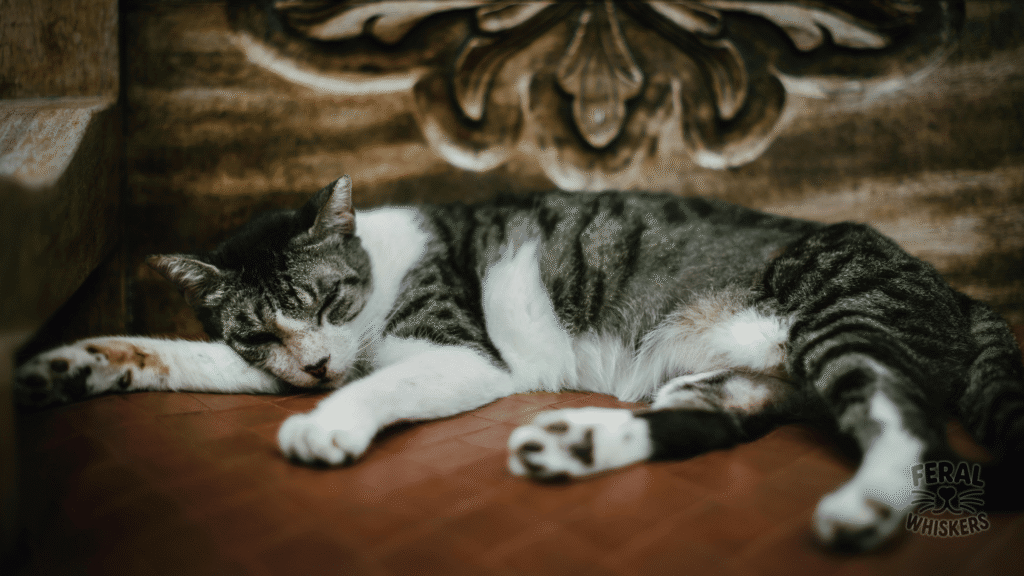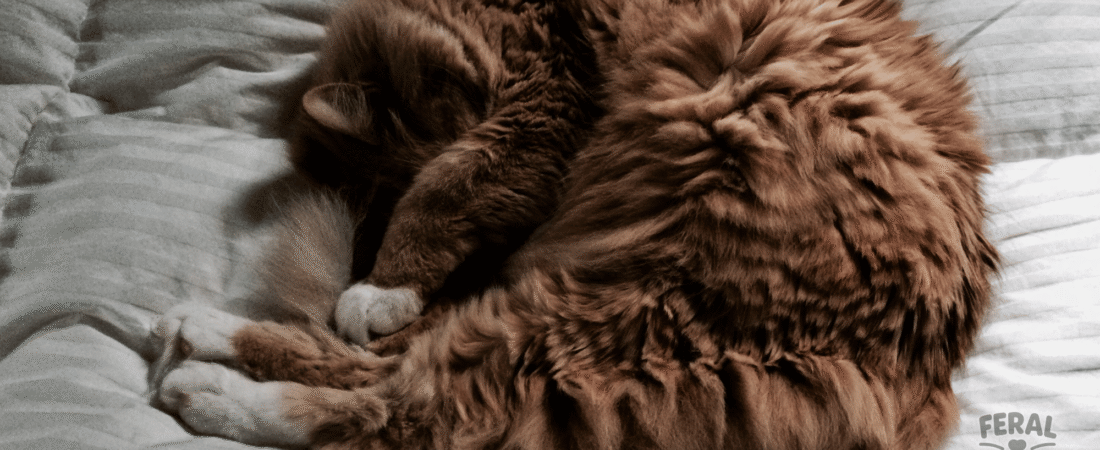📌 Cats: The Champions of Sleep

If you’ve ever envied your cat for their napping skills, you’re not alone. Cats are world‑class sleepers, often snoozing away 12 to 16 hours a day — and some can even hit 20 hours on lazy days. That’s roughly 70% of their life spent asleep!
But why do cats sleep so much — and what’s going on when they doze? Let’s break it down with some fascinating facts about kitty slumber.
🦠 Fun Facts About Cat Sleep
1. Sleep = Survival Instinct
In the wild, cats are predators. Hunting takes short bursts of intense energy, followed by long rest periods to restore strength. Domestic cats have inherited this “hunt‑nap” rhythm, even if their prey is a stuffed mouse.
2. They’re Crepuscular Creatures 🌙
Cats aren’t fully nocturnal or diurnal — they’re crepuscular, meaning most active at dawn and dusk. This explains the midnight zoomies and 5 a.m. pounce on your toes, while the rest of the day is reserved for serious snooze time.
3. Cats Sleep Light… and Deep 😌
Most naps are “light sleep” (about 75%), where cats stay semi‑alert, ears twitching at sounds. But the remaining 25% is deep sleep (REM stage), where they dream — paws twitch, whiskers quiver, and tails flick as they chase imaginary prey.
4. Kittens & Seniors Sleep Even More 🍼👴
Kittens may sleep up to 22 hours daily because their bodies are growing nonstop. Senior cats also nap longer, conserving energy and healing from age‑related wear.
5. Warm Spots Are Sleep Magnets ☀️
Cats love catching Zs in sunny windowsills, warm laps, or even on top of laptops. Unlike humans, who regulate at ~98.6°F, cats prefer ambient warmth closer to 86–97°F, making heat sources irresistible.
6. Cats Can Dream 🌌
Yes, cats dream! During REM sleep, they relive daily experiences, like stalking toys or interacting with you. Those adorable paw twitchings? That’s your cat dreaming of being the lion they think they are.
7. Sleep = Healing 🧘♀️
Cats use naps for recovery. Sleep helps with immune support, growth, and even emotional balance. Ever notice your cat sleeps extra when sick? Their body is using energy to heal.
8. Their Sleep Doesn’t Match Ours ⏰
Cats sleep in short cycles, usually 15–30 minutes of sleep followed by brief awake spurts. This supports their predator/prey survival strategy: rest but stay vigilant.
🌿 Fun Perspective for Cat Parents
- Don’t be alarmed if your cat sleeps most of the day — it’s totally normal.
- But sudden sleep changes (like oversleeping beyond normal, or being unusually restless) can be a red flag for illness and should be checked by a vet.
- Want to harmonize your schedules? Tire your cat with play just before bedtime and feed them afterward to encourage longer, quieter sleep stretches.
❓ FAQs
Q1: Do indoor cats sleep more than outdoor cats?
Yes. Outdoor cats need more time awake for hunting and territory patrol. Indoor cats, safe from threats, often nap more.
Q2: Are cats bored when they sleep so much?
Not necessarily. Sleep is biologically hardwired. But if awake time feels restless or destructive, more enrichment may help.
Q3: Why does my cat nap in weird places (sink, shoebox, keyboard)?
Small enclosed spaces feel secure. Warm, elevated, or soft spots mimic safety in the wild.
Q4: Can I wake my cat from a nap?
Yes, but gently. Waking a cat from deep sleep can startle them. A soft pet or name call works best.
💡 Final Thoughts
Cats are expert nappers because evolution designed them that way: hunters with built‑in rest modes. Whether basking in the sunlight, curled beside you, or sprawled ridiculously on the couch, every nap is tied to survival and well‑being.
✅ Key takeaway: Cats aren’t lazy — they’re efficient. Sleeping fuels their health, hunting instincts, and hidden “lion within.”

